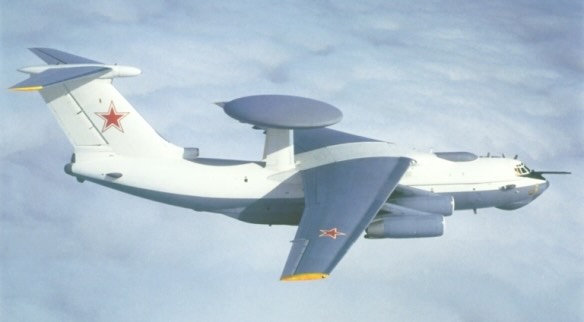A-50 Mainstay
Summary
| Category | Military Special Mission Aircraft |
| Origin country | 🇷🇺 Russia |
| Manufacturer | Beriev |
| First flight | 19 December 1978 |
| Year introduced | 1985 |
| Number produced | 42 units |
| Average unit price | $300 million |
Description
Developed to succeed the Tupolev Tu-126 "Moss," the Beriev A-50 is an airborne early warning and control (AEW&C) platform based on the Ilyushin Il-76 transport airframe. The aircraft, which carries the NATO reporting name "Mainstay," had its first flight on December 19, 1978, and its existence was revealed to the West that same year. Manufactured by Beriev, the A-50 officially entered service with Soviet forces in 1985. Approximately 42 units were produced between 1978 and 1992, with manufacturing halting after the dissolution of the Soviet Union. Recent developments suggest production of the modernized A-50U variant may resume.
The A-50 is distinguished by its large, 9-meter diameter over-fuselage rotodome, which houses the antenna for its Liana surveillance radar system. Designed by MNIIP and produced by NPO Vega, this radar provides a detection range of up to 650 kilometers for aerial targets and 300 kilometers for ground targets, with the capability to track 150 targets simultaneously. A mission crew of ten operators, in addition to five flight crew members, processes the data. The aircraft has an endurance of four hours and can be refueled in-flight by Il-78 tankers. The A-50U modernization program, initiated in 2003, replaces the original analogue avionics with a new digital suite that improves data processing, signal tracking, and target detection, while also adding crew rest and galley facilities.
Primarily a command and control asset, the A-50's main function is surveillance and the direction of other combat aircraft. It is capable of controlling up to ten fighters simultaneously for air-to-air intercept or air-to-ground attack missions. For self-defense, the aircraft is equipped with two 23mm GSh-23 autocannons installed at the base of the rudder in a tail turret configuration. Its payload capacity is inherent to its role, carrying the mission systems and crew necessary to perform its AEW&C duties rather than conventional ordnance.
The A-50 first entered service in 1984 at an airbase in the Lithuanian SSR before being consolidated at the Ivanovo Severny base. It saw early use during the 1990–1991 Gulf War, where aircraft monitored coalition air operations from over the Black Sea. From late 2015, the A-50 was deployed to support Russian military operations in Syria. Its role became particularly prominent during the Russo-Ukrainian War, with deployments to Crimea beginning in 2018. The platform suffered notable losses in early 2024, when Ukrainian forces claimed to have shot down two A-50U aircraft over the Sea of Azov, significantly impacting Russia’s operational fleet. Reports also indicate the A-50 may be integrated with ground-based S-400 missile systems to enhance targeting capabilities.
Main Variants
- A-50: This is the original production variant developed for the Soviet Air Defence Forces.
- A-50M: An updated version of the A-50 fitted with an in-flight refueling system and Shemel-2 radars.
- A-50U: A modernized variant featuring an advanced digital avionics suite, the Shemel-M radar, and improved crew facilities.
- A-50EI: An export version developed for the Indian Air Force, equipped with Israeli radar.
Technical specifications
| Version: A-50E | |
|---|---|
| Crew | 5 (2 pilots, 3 other flight crew) + 10 mission operators |
| Operational range | 7,500 km (4,660 mi) |
| Endurance | 4 hours |
| Maximum speed | 850 km/h (528 mph) |
| Wing area | 300 m² (3229.2 sqft) |
| Wingspan | 50.6 m (166.0 ft) |
| Height | 14.8 m (48.6 ft) |
| Length | 46.6 m (152.9 ft) |
| Service ceiling | 15,500 m (50,853 ft) |
| Empty weight | 61,000 kg (134,482 lbs) |
| Max. takeoff weight | 190,000 kg (418,878 lbs) |
| Powerplant | 4 x Soloviev D-30KP turbofan engines delivering 12000 kgf each |
Current operating countries
| Country | Units | ||
|---|---|---|---|

|
Russia | 12 | |
All operators

